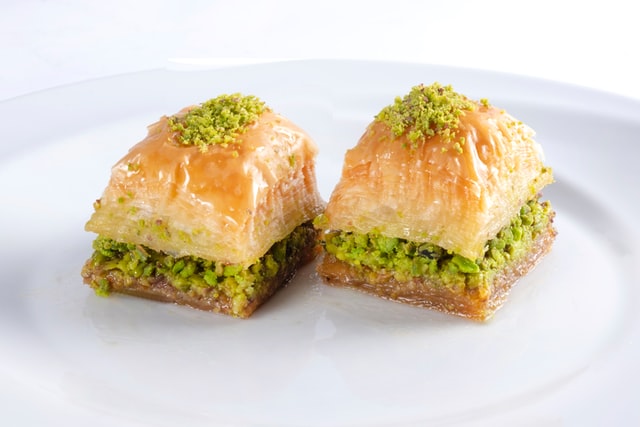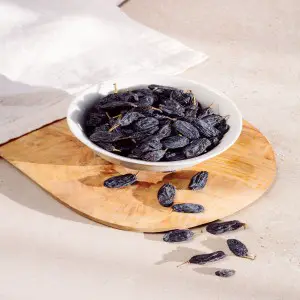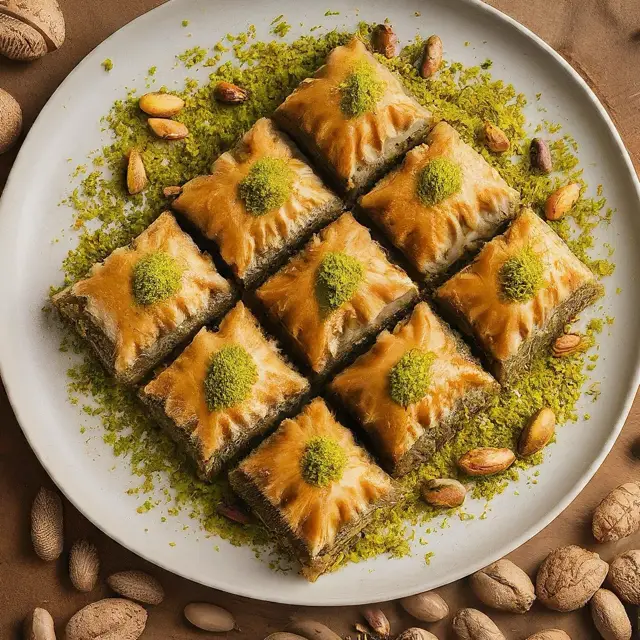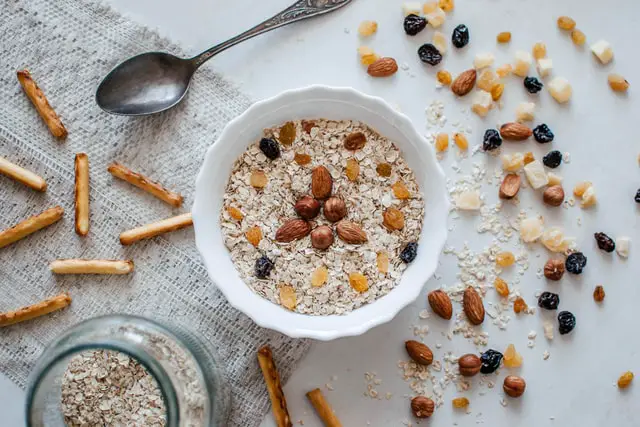I Have Heart Disease, Is Baklava Safe for Me?
Finding a healthy balance of what you can eat vs. what you should avoid when you have heart disease is difficult. Where the mind might desire a sweet piece of baklava, your physician might suggest otherwise if you have been diagnosed with heart disease. Heart disease is a condition that causes over 17.9 million deaths each year and it requires a strict change to your dietary intake. Essentially, when you have heart disease, foods such as baklava should be avoided.
What is heart disease?
Heart disease is a condition in which plaque builds up in arteries leading to and from the heart. This condition requires your heart to work harder at pumping blood through your cardiovascular system. Although a heart is a considerably strong muscle, over time, it can weaken its ability to pump blood effectively, especially if a plaque blockage is apparent in the artery. Eventually, the heart is unable to properly pump blood and a heart attack can occur. Surviving a heart attack can happen, but a major cardiac event can be fatal if heart disease is left untreated.
Poor diet and an inactive lifestyle are the biggest contributors to heart disease. However, other factors are considered causes as well and they include…
- High Cholesterol
- Smoking
- Obesity
- High Blood Pressure
- Age (a narrowing of the arteries is common as we age)
- Gender (men are more likely to be affected)
- Diabetes
- Family History of Heart Disease
- Overabundant Stress
Brief History of Baklava
Baklava is enjoyed in professional kitchens and even at home throughout the world. The dessert is sweet and satisfying to the soul, but, like many culinary inventions, its history is shrouded in mystery. Countries across the globe claim ownership of the dish, but evidence suggests its origin lies in 800 BC with the Assyrian Empire. Later baklava was developed further by Ancient Greeks through trade routes.
As popularity grew, this dish made its way around the world with each nation claiming it as their own. Although many nations have made claims, baklava is most popular in Istanbul and neighboring countries. Sultans, heads of state, and leaders have traditionally used baklava as a lavish dessert for important dinners. It remains one of the best dessert options to cap off any meal. The sweet treat is delectable and satisfies multiple pallets for texture and a myriad of sweet flavors.
Why is Baklava So Bad for Heart Disease Patients?
Heart disease patients are told to invest in plenty of exercise and healthy foods such as oatmeal, beets, salmon, and blueberries. Essentially, heart disease sufferers are told to avoid red meats and saturated fats. Saturated fats tend to be those that remain hard at room temperature, but some saturated fats do not follow this rule. Olive oils tend to be among the best fats to use when you suffer from heart disease.
Traditional baklava consists of absolutely none of these healthy ingredients and the fat used within the dish is butter, among the worst saturated fat options. Other ingredients such as cinnamon and nuts can be healthy on their own, but when swimming in a sea of unhealthy fat, the nutritional value is null and void. Honey is also a relatively healthy ingredient, as it is a natural sweetener, but unfortunately, most recipes call for additional unhealthy caster sugar making the dish a true no, no for heart disease sufferers.
Nutritional Value in Baklava
To further break down the unhealthy attributes of baklava, we can look at its nutritional value composition. Baklava consists of nuts, spices, and sugar between thin layers of phyllo dough. For a 2oz. serving of baklava, you can expect a total calorie content of 230. A 2,000-calorie diet, which is recommended for the average adult, makes up 11.5% of the total caloric intake for the day. It is simply unwise to devote that many calories to just one dessert.
As for carbohydrates, baklava contains 30 grams of carbs. A total of 10% of the recommended intake of carbs for the average diet. A 2oz. serving consists of 17g sugar and merely 3g of protein. Dietary fiber is just 1g.
Fat content for a slice of your favorite baklava dessert contains a total of 11g of fat. 7.5g are unsaturated with 2 grams of saturated fat. In total that is 17% of the total recommended intake of fat in your diet and you can expect to find no actual vitamins and minerals in that slice apart from 75mg of sodium accounting for 3% of the total daily recommended value of sodium.
Can I Have Just a Little Baklava?
Unfortunately for baklava lovers, the dish is just unhealthy. It maintains a lot of butter and saturated fats that your body simply does not need. However, even your physician will tell you that moderation is the key. Where eating baklava every day is surely a bad decision, having an occasional piece is perfectly fine. Keep your portions to a very small size and only eat them on rare occasions. Living with heart disease will take some adjustments, but with a little commitment and support from others in your life, you will have a productive and happy life.
Is There a Way to Make Baklava Healthier?
The key ingredient in enjoying an occasional indulgence like baklava when you suffer from heart disease is looking at each ingredient and substituting it for a healthy one. Phyllo dough is essential and there is no substitution for it. However, it is a relatively thin dough and does not offer significant unhealthy attributes by itself, so no issue there.
Next, we can look at the spices. Spices used in baklava vary by recipe, but the dominant spice is cinnamon. Cinnamon is a very healthy spice and is perfectly fine to use in any baklava recipe.
We come to the nuts in baklava. There are a variety of options from almonds to pistachios depending on what part of the world the baklava is being prepared in and what happens to be available. Nuts are generally healthy and regarded as healthy fats in the nutrition world. However, some stand taller than others. When making a healthier version of baklava, consider the use of walnuts. They tend to provide the highest level of healthy fats and essential nutrients.
Finally, we come to the catalyst of the dessert, the butter. Butter in itself is not good, and the amount used in a traditional baklava recipe is astounding, but there is hope. Seek butter options that are designed for a healthier diet. Smart Balance or Challenge Butter is made with more natural ingredients and has no salt added. Using them instead of traditional kinds of butter can make your baklava slightly healthier without diminishing the taste.
Again, we stress to avoid baklava in your general diet when you have heart disease, but an occasional piece made with healthier ingredients can allow you to have your baklava and eat it too. Moderation is the key ingredient in any lifestyle change and diet option.







